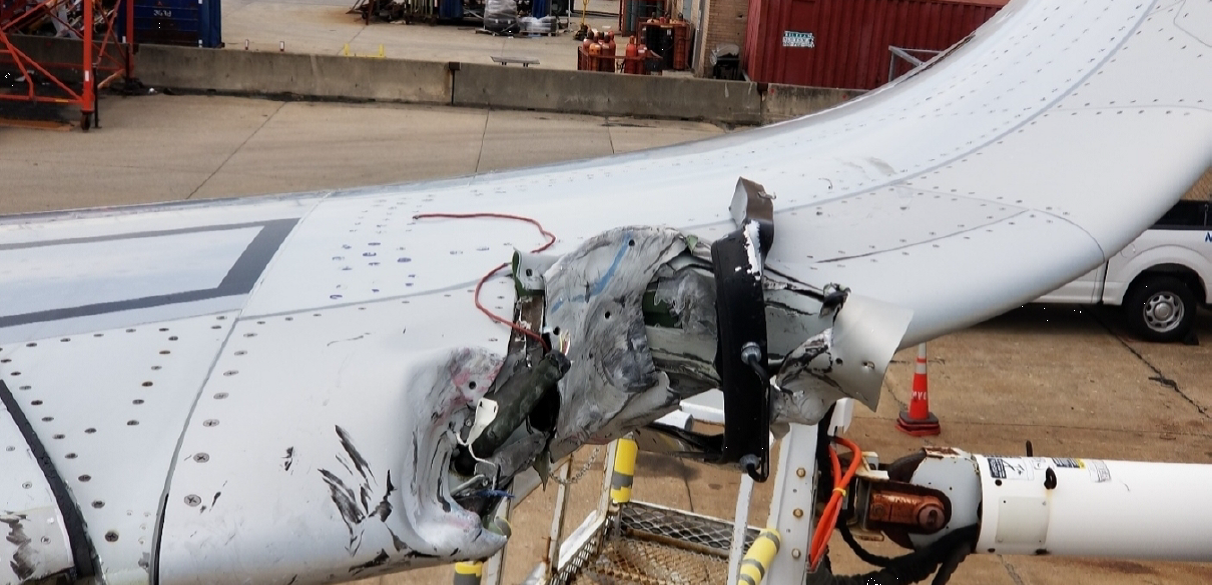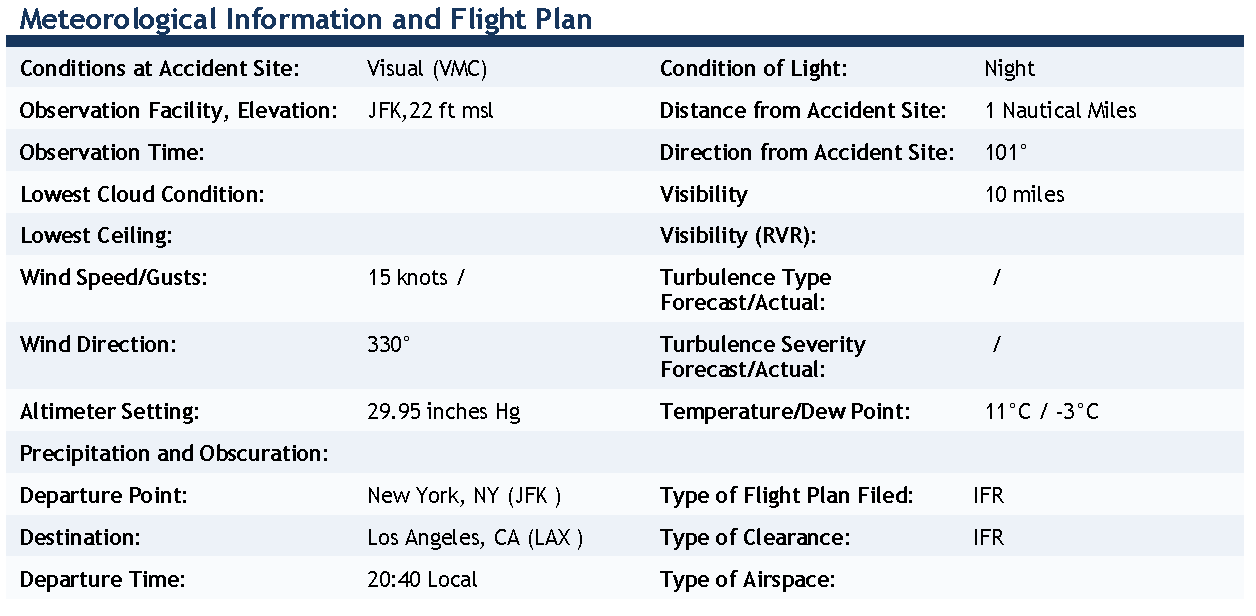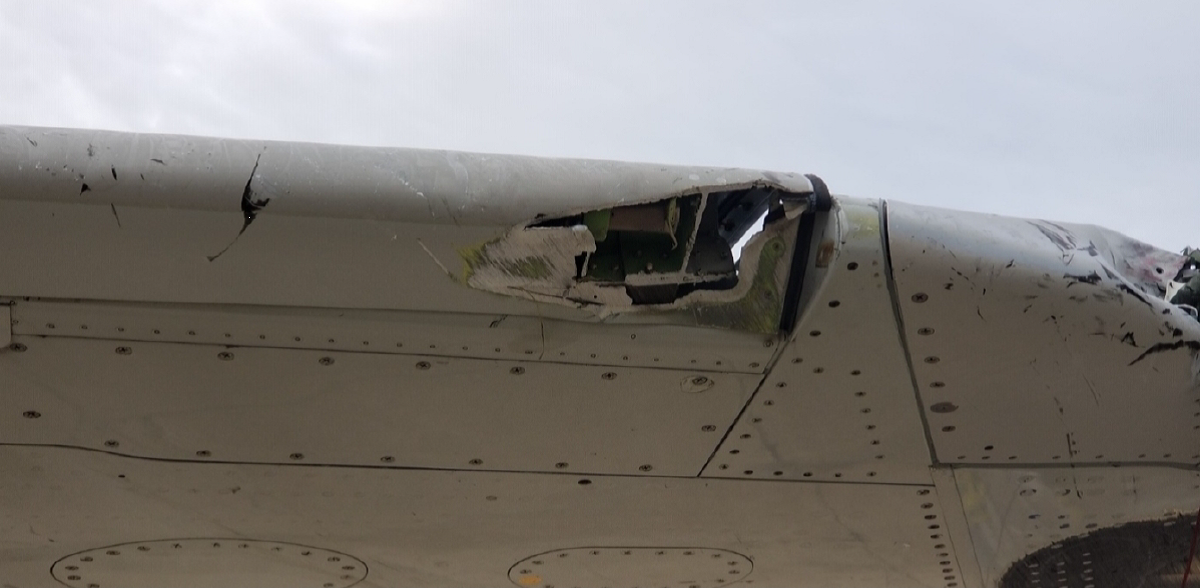


National Transportation Safety Board (NTSB) has released it's analysis of the April 2019 accident involving an American Airlines Airbus A321 aircraft , where the aircraft left wingtip was damaged during the act of takeoff from New York JFK Airport (IATA: JFK, ICAO: KJFK).
NTSB's investigation suggests , the captain’s excessive left rudder pedal input during the takeoff ground roll, which caused a large heading deviation and a left roll upon rotation that resulted in the left wingtip striking the ground.
Accident Profile : Airbus A321-200 ( Regd. N114NN) — 10th April 2019 — Flight American Airlines AA300 from New York JFK Airport (NY, USA) to Los Angeles (CA, USA) with 101 passengers and 8 crew members — wingtip strike and collision with runway sign during takeoff — Aircraft returned back to the airport.

Earlier on May 12th 2021 , the NTSB had released a preliminary report stating :
On 10 April, 2019, about 2040 EDT, American Airlines flight 300, an Airbus A321, N114NN, experienced a left roll and the left wingtip struck the ground and a runway distance marker during takeoff from runway 31L at John F. Kennedy International Airport (KJFK), Queens, New York. The flight crew safely returned to the airfield approximately 30 minutes later.
There were no injuries to the 110 passengers and crew onboard and the airplane. Post flight inspection indicated the airplane was substantially damaged.
The NTSB did an analysis to the accident and came up with their remarks in below order :
This accident occurred when an American Airlines Airbus A321 entered a left roll during takeoff from runway 31L at John F. Kennedy International Airport . The wind at the time resulted in a 14- to 17-knot crosswind from the right , which was below the company’s 35-knot crosswind limitation.

The initial takeoff roll proceeded normally , with the captain (the pilot flying) applying left rudder pedal to counter the right crosswind . The captain stated that he kept the airplane near the runway centerline and that “everything was ok” when the airplane reached 80 knots.
When the airplane reached the rotation speed of 156 knots while still on the ground, the captain made a large left rudder pedal input, from 8° to 25°, during a 1.5-second timeframe.
In response to this large rudder pedal input, the airplane’s heading deviated to the left, and its lateral acceleration increased to a maximum of 0.32 G.
During a post accident interview, the captain stated the airplane made a “significant” turn to the left. The captain also stated that he was “looking at the runway edge” and knew he had to get the airplane into the air.
Digital flight data recorder (DFDR) data showed that the sidestick was pulled to its full nose-up position and a right sidestick position. During the aft sidestick and right sidestick application to rotate the airplane, the rudder remained close to its full-left deflection for 3 seconds.
As the nose of the airplane lifted off the ground , the airplane began to roll to the left, and the left roll rate accelerated as the main landing gear lifted off the ground, reaching a maximum of 37° left wing down as the captain moved the rudder and sidestick to full right and to full aft . These movements arrested the left roll and allowed the airplane to continue to lift off.

The large left roll angle immediately after liftoff resulted in the left wingtip striking the ground and a runway distance marker, part of which remained imbedded in the wingtip.
Airbus engineering simulations performed as part of this investigation demonstrated that the several seconds of near-maximum left rudder generated a rolling moment after the gear had left the ground to impart the left roll rate that the DFDR recorded.
No airplane flight control abnormalities were noted, except for a left aileron deflection as the left wingtip scraped the ground. Thus, the left roll that occurred was in response to the captain’s left rudder pedal input during rotation of the airplane.
Also, Airbus’ engineering simulations demonstrated that the airplane’s deviation to the left while on the ground was in response to the captain’s rudder pedal input; no abnormalities in the airplane’s response were noted.
In addition, American Airlines conducted a study of 13 months of takeoffs and found that the accident flight had a larger heading change, roll angle, maximum commanded rudder, and duration of maximum commanded rudder than the other takeoffs in the data set.
Even though the crosswind that was occurring during the accident takeoff was about one-half of the company’s 35-knot crosswind limitation, the accident airplane had a greater maximum deflection and a greater duration of input compared with all the other flights in the data set , including several flights with takeoffs that occurred with a stronger crosswind than the crosswind during the accident flight.
Thus , the accident captain’s left rudder pedal input was excessive and not necessary for the crosswind that was present during the takeoff.
Report Courtesy : National Transportation Safety Board (NTSB)
Pictures Courtesy : American Airlines.
